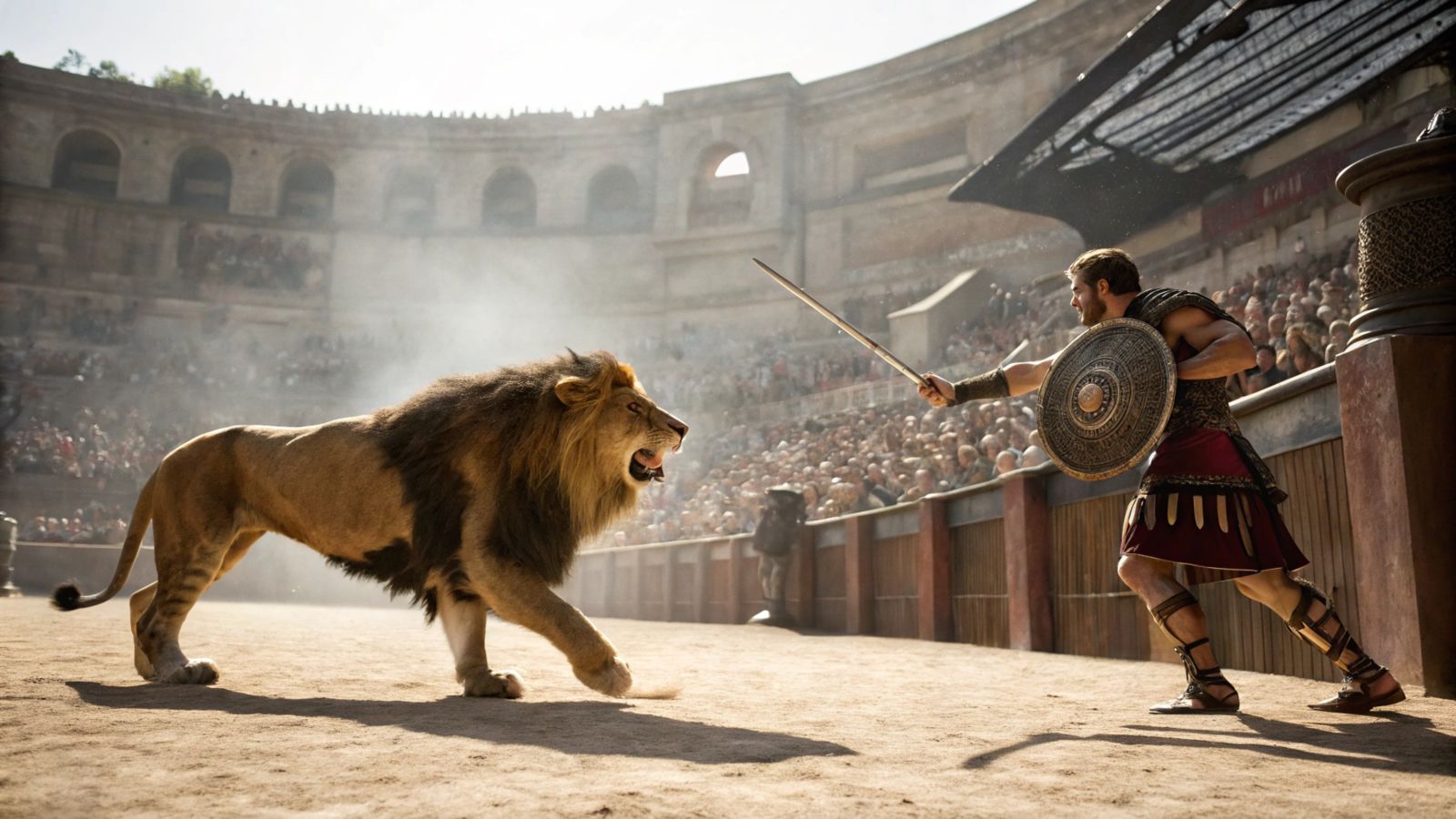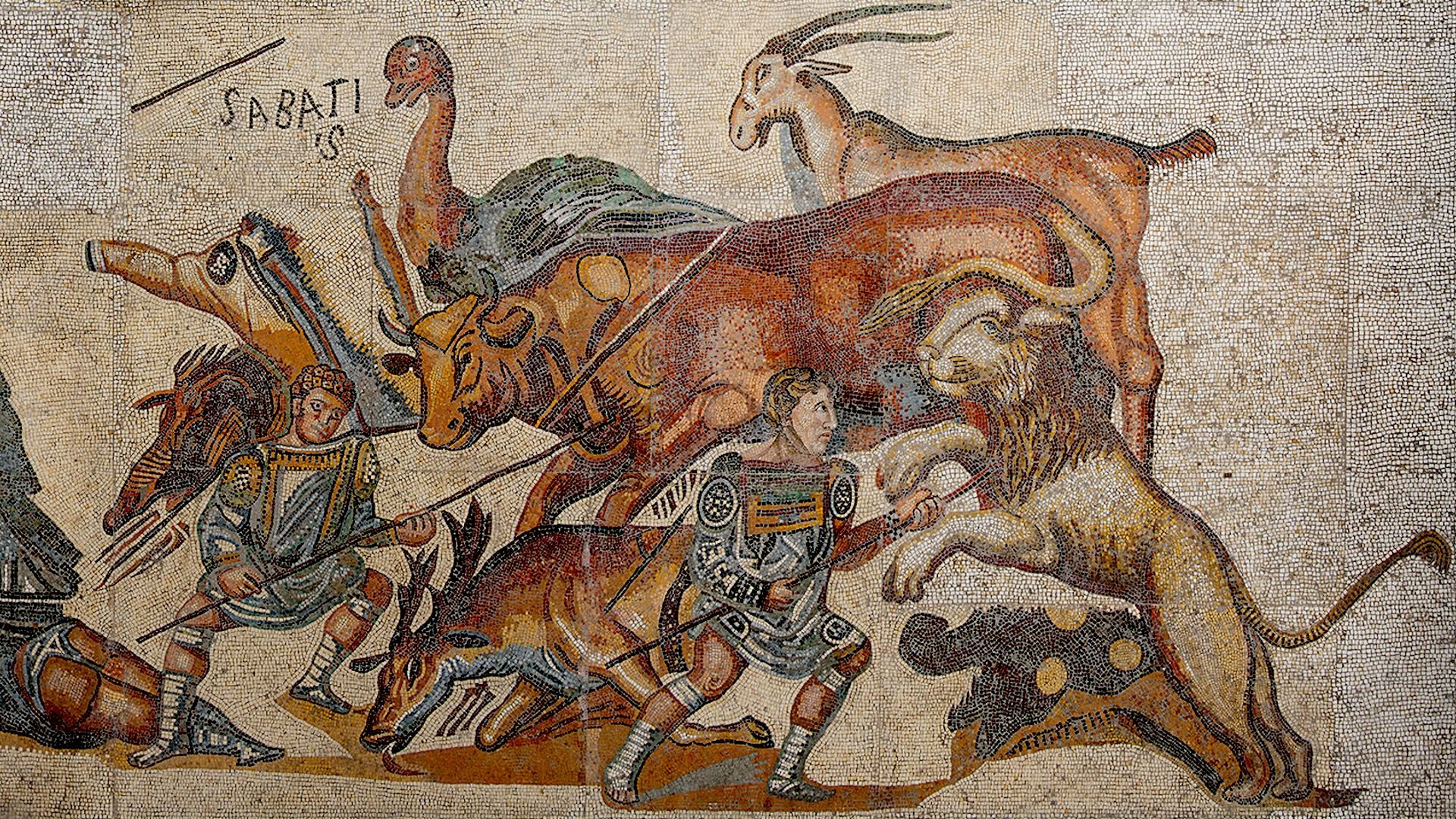Follow us on Google News (click on ☆)
Analysis of the bones reveals that the individual, a man aged 26 to 35, was decapitated and showed injuries characteristic of an attack by a large feline, likely a lion. The researchers, whose findings were published in PLOS One, believe these marks match those left by big cats in documented cases.

The burial site, a cemetery believed to house other gladiators in York (formerly Eboracum), lends weight to the hypothesis of an arena battle. Other skeletons unearthed at the site show healed trauma, indicating repeated combat, and many were decapitated—a practice associated with defeated gladiators.
The study proposes two scenarios to explain the man's death: a trained gladiator fighting with a weapon or a condemned man battling unarmed. Researchers favor the first hypothesis, given the cemetery's context and the observed injuries.
Importing a lion to York from North Africa would have been a logistical feat, requiring transport by sea, river, and road. The animal's handlers faced significant challenges in feeding and safely transporting it, not to mention the stress endured by the animal during the journey.
Reactions from experts outside the study are mixed. Some question whether the man was truly a gladiator, suggesting he may have been a condemned prisoner or that the bite marks came from local wolves. Others find the conclusions plausible and well-supported, praising an important contribution to understanding Roman arena combat.

This mosaic depicts battles between men and beasts, a common practice in the Roman Empire.
Credit: Mondadori Portfolio via Getty Images
This discovery would thus represent the first direct anthropological evidence of human-animal combat in Roman Europe. It sheds new light on the spectacular and often deadly entertainments that captivated the Empire's populations.
What was the difference between a gladiator and a venator in ancient Rome?
In ancient Rome, gladiators and venatores were two distinct types of arena fighters. Gladiators primarily fought each other or animals in strictly regulated combat, while venatores were specially trained to battle wild beasts.
Condemned prisoners, on the other hand, could be thrown into the arena untrained and unarmed—making it more of a public execution than a sporting spectacle. This distinction is key to understanding the varied forms of entertainment in Roman amphitheaters.
Confusion between these roles persists in modern depictions, but recent historical and archaeological research seeks to clarify these differences. Discoveries like the one in York contribute to this more nuanced understanding of Roman practices.
How were big cats transported in the Roman Empire?
Transporting big cats like lions from North Africa to distant Roman provinces such as Britain was an uncommon feat. It involved a combination of sea and river travel, with overland segments where animals were moved in cages.
Handlers had to ensure the animal's safety and that of the crew during transport. Risks included the animal dying from travel stress or attacking the humans tasked with its care.
Established trade routes, such as those linking York via the Rhine and Rhône rivers, were crucial for this type of transport. However, details on specific methods used to calm or feed the animals during the journey remain poorly documented.